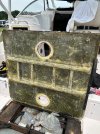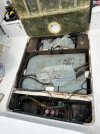Hey all,
I am newer to the community. I have a 99 268 Islander with new twin 200 mercs. I am very happy with it especially after the repower.
I am having issues with my fuel system and am hoping one of you has the knowledge I need. Currently we only run on the one tank. fill closest to the bow. My understanding is it is a 135 gal tank. The rear fill is for the reserve 65 gal tank. Am i wrong and have this flipped? The tank with the rear fill is full of bad fuel and i need to drain it which is why i do not use it
recently my boat stopped registering my fuel level which is very concerning and i'd like to fix it asap. Does anyone know where the fuel sending unit is and which one my boat requires? my local shop did not know and suggested i come here for an answer
Thanks all!
I am newer to the community. I have a 99 268 Islander with new twin 200 mercs. I am very happy with it especially after the repower.
I am having issues with my fuel system and am hoping one of you has the knowledge I need. Currently we only run on the one tank. fill closest to the bow. My understanding is it is a 135 gal tank. The rear fill is for the reserve 65 gal tank. Am i wrong and have this flipped? The tank with the rear fill is full of bad fuel and i need to drain it which is why i do not use it
recently my boat stopped registering my fuel level which is very concerning and i'd like to fix it asap. Does anyone know where the fuel sending unit is and which one my boat requires? my local shop did not know and suggested i come here for an answer
Thanks all!



